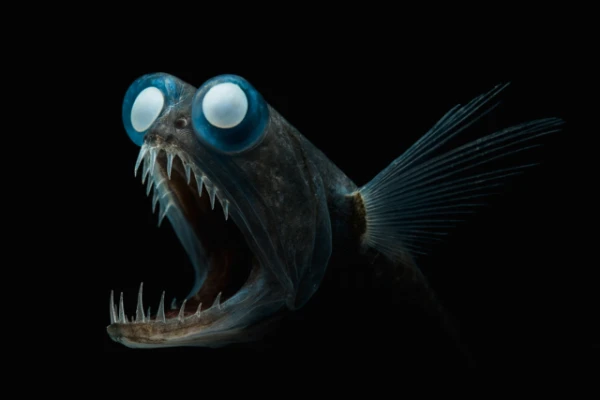
Giant fish, or telescopes, belonging to the species Gigantura indica and Gigantura chuni, got their name due to their unusually long tubular eyes that protrude forward from their heads.
This feature helps them see better in the gloomy depths of the ocean, where there is almost no light — at depths of 500 to 2000 meters.
Their eyes are oriented upwards, allowing them to spot silhouettes of bioluminescent or regular prey swimming above.
The giant fish is a cunning predator: with sharp teeth and a mouth that can open wide enough to swallow prey twice its size, this creature resembles such eerie deep-sea inhabitants as the black swallower and the venomous Sloan's fish.
To avoid revealing itself due to swallowed bioluminescent prey, the fish has a black stomach that masks light in the depths.
The size of the fish is small — only 15–20 cm, so it poses no danger to humans.
This is an astonishing example of adaptation that allows survival and hunting in some of the harshest conditions on the planet — in the deep and dark oceanic world.













